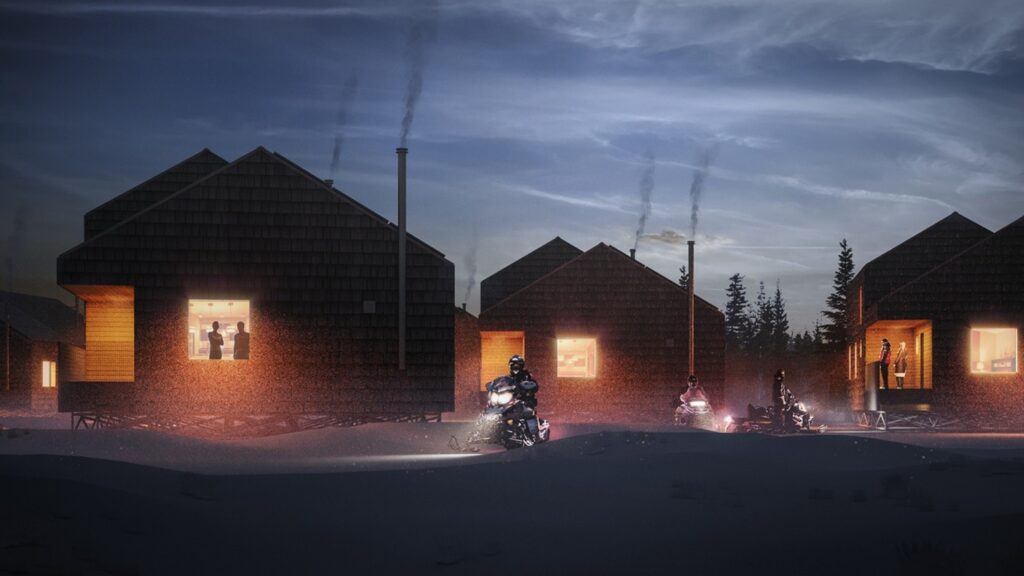
Written by: Alex Gray, President Sightline Building Solution
Building Sustainable and Resilient Homes in the North: Key Guiding Principles
This blog is part of a 12-part series exploring the challenges and solutions for building in northern and remote communities. Each installment will focus on a crucial aspect of northern housing, providing insights and best practices to create durable, energy-efficient, and resilient homes.
Northern housing presents unique challenges due to extreme environmental conditions, logistical difficulties, and the need for durable, long-lasting materials. This blog explores essential guiding principles to ensure housing is robust, functional, and sustainable, highlighting key considerations for construction in northern and remote communities.
- Durability and Robustness
Northern climates demand materials that can withstand extreme weather conditions. Unlike southern construction, which often benefits from mild temperatures and easy material access, northern housing must be resilient against factors such as:
- Extreme Cold – Materials like vinyl siding become brittle and crack in freezing temperatures.
- Thermal and Structural Movement – Metal roofing with exposed fasteners can shift due to temperature fluctuations, leading to water infiltration and damage.
- Wildlife and Fire Resistance – Homes must be built to withstand risks from wildlife (rodents, bears) and natural disasters like wildfires.
- Moisture and Freeze-Thaw Cycles – Proper drainage and water-resistant materials prevent structural damage caused by ice formation.
- Sunlight and UV Radiation – Harsh sunlight deteriorates some materials, such as asphalt shingles, requiring alternatives like metal roofing for longevity.
- Wind and Snow Loads – Strong winds and snowdrifts necessitate proper anchoring of structures to prevent shifting and collapse.
Given the logistical constraints of repairing homes in remote areas, it is crucial to use materials with long lifespans. For instance, a high-quality metal roof, which can last up to 40 years, is a better investment than traditional asphalt shingles with a 15- to 20-year lifespan.
- Backup Systems for Critical Components
Since northern homes rely on essential systems like heating, redundancy is critical. If a primary heating system fails, there must be a backup. A combination oil/wood furnace ensures warmth even if one fuel source becomes unavailable. Generators can also provide emergency power for heating and lighting.
- Ease of Repair and Maintenance
Materials and designs should be easy to repair with limited resources. A sloped roof, for instance, is more manageable for patching leaks compared to a flat roof, which accumulates water and requires complex repairs. Using materials that can be repaired or replaced with minimal tools is essential in remote settings.
- Tolerance to Installation Errors
Construction in northern communities often involves local workers with varying skill levels. Materials should be user-friendly and allow for minor installation mistakes.
- Mineral wool insulation is easy to install and correct if gaps are found.
- Spray foam insulation, on the other hand, requires precision; errors in application can lead to cracking, shrinking, or even health hazards from off-gassing.
Choosing forgiving materials helps ensure long-term performance, even with occasional installation inconsistencies.
- Simplicity in Design and Materials
Given the reliance on local labor, homes should be built using straightforward construction methods and familiar materials. Overly specialized systems increase dependency on external experts, making maintenance difficult.
For example, foam board insulation is preferable to spray foam since it can be reused and repurposed if necessary. Simple, layered building techniques reduce the need for high-maintenance sealants.
- Low-Maintenance Housing
In remote locations, frequent maintenance is not always feasible. Homes should be designed with minimal upkeep in mind. High-maintenance materials, such as those requiring frequent resealing, should be avoided. Instead, proper flashing and durable materials should be used to naturally shed water and withstand environmental wear and tear.
- Flexibility and Adaptability
Northern housing must be able to adjust to changing environmental conditions. Flexible construction methods, such as screw-pile adjustable foundations, are superior to rigid ones. These foundations accommodate ground movement due to frost heave and shifting permafrost, ensuring the long-term stability of the structure.
- Efficient Shipping and Assembly
Transporting construction materials to remote communities is costly and complicated. Housing designs should minimize waste and be optimized for transportation.
- Use four-foot increments in construction layouts to reduce material waste.
- Avoid oversized components requiring specialized hoisting equipment.
- Use lightweight materials where possible to simplify handling and transportation.
Modular and prefabricated homes are often ideal for northern construction since they can be assembled quickly with minimal on-site labor.
- Long-Term Quality vs. Initial Cost Savings
Budget constraints often lead to compromises in housing quality. However, lower upfront costs can lead to higher maintenance and repair expenses over time. Investing in durable materials and proper construction methods ensures long-term savings and housing sustainability.
A good example is the housing prototype in Quaqtaq, Nunavik, which demonstrates high-quality construction practices. Conversely, communities with limited access to proper materials often resort to patchwork repairs, leading to poor long-term housing conditions.
- Safety Considerations
Safety is paramount for both construction workers and future residents. Simple design choices can enhance safety and reduce risks:
- A 4:12 roof slope is easier to maintain and safer than an 8:12 slope, reducing fall risks.
- Using fire-resistant materials minimizes hazards from both internal fires and wildfires.
- Proper ventilation prevents indoor air quality issues, which can be exacerbated by poorly installed insulation.
Final Thoughts
Building homes in northern communities requires careful planning and consideration of environmental challenges. By prioritizing robust materials, backup systems, ease of repair, and sustainable construction methods, northern communities can develop resilient housing solutions that improve quality of life while minimizing long-term costs.
This is just the beginning of our 12-part blog series on building in the North. In the next installment, we’ll dive into foundations and site preparation techniques tailored for permafrost and extreme weather conditions. Stay tuned for more insights on constructing durable, efficient, and long-lasting homes in remote northern communities.
May 20, 2025

